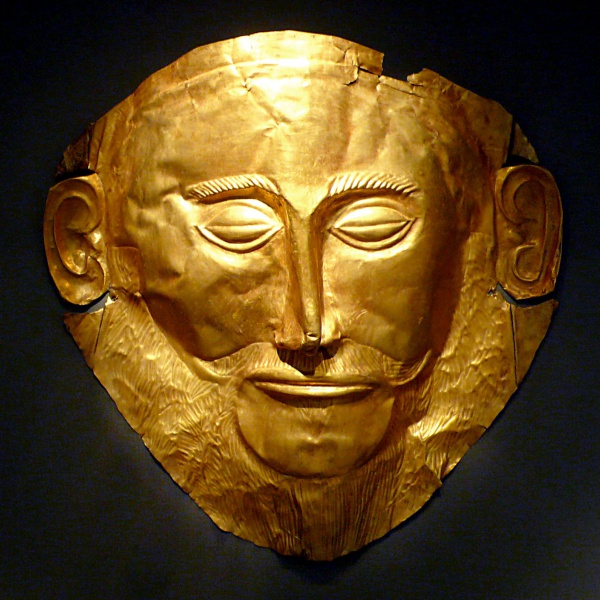Facts About Mask of Agamemnon
The Mask of Agamemnon, a magnificent gold funeral mask, was unearthed at the ancient Greek site of Mycenae. Today, this captivating artifact can be admired at the National Archaeological Museum of Athens, where it is often likened to the "Mona Lisa" of prehistory due to its enigmatic allure.
In 1876, German archaeologist Heinrich Schliemann discovered the mask. He believed it belonged to Agamemnon, the legendary Mycenaean king featured in Homer's epic, the *Iliad*. However, modern research has shown that the mask dates back to approximately 1600 BCE, about 400 years before the supposed events of the Trojan War.
Schliemann found the mask in Grave Circle A at Mycenae, among five similar masks in royal shaft graves. Made of gold, the mask symbolized the honor, wealth, and status of its wearer. Though Schliemann initially claimed it was Agamemnon's mask, later analysis has cast doubt on this identification, raising questions about the mask's true owner and even its authenticity.
Throughout the latter half of the 20th century and into the 21st, scholars such as William Calder III and David Traill formally questioned the mask's authenticity. They pointed to Schliemann's controversial reputation and suggested he might have planted artifacts during his excavations. However, others argue that the Greek Archaeological Society supervised the excavation, reducing the likelihood of fraud.
Most modern archaeological research supports the mask's authenticity, even though it is now believed to predate the Trojan War by several centuries. Some experts think it could be as old as 2500 BCE. Despite the ongoing debates, the Mask of Agamemnon remains a remarkable archaeological discovery, offering valuable insights into ancient Greek burial customs and artistry.

 North Macedonia
North Macedonia